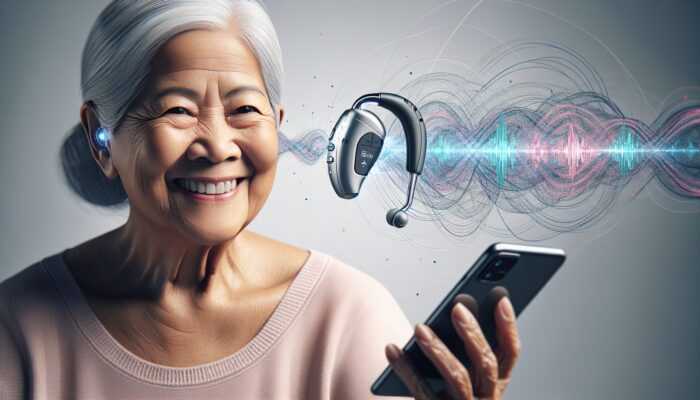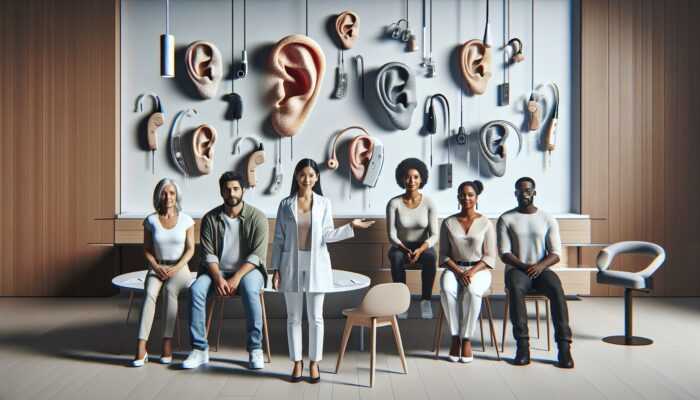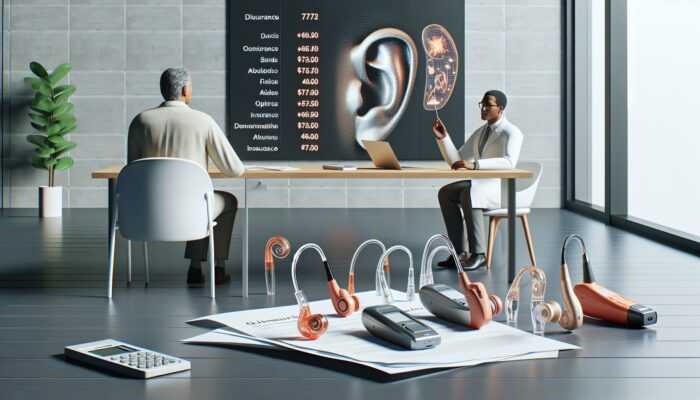Last Updated on 27/06/2025 by Admin
Boost Your Communication Skills in Social Settings
Achieving Enhanced Speech Clarity for Better Conversations

In lively environments, such as bustling cafes in Paris or vibrant parks in Tokyo, hearing aids are essential for amplifying speech clarity. These advanced devices effectively filter out distracting background noise, allowing users to concentrate on conversations effortlessly. Research shows that individuals using hearing aids experience a remarkable improvement in the clarity of speech, leading to enriched social interactions. Picture yourself at a joyous wedding celebration in Brazil; hearing aids ensure that every heartfelt toast is clearly audible. This enhancement in auditory perception not only strengthens personal relationships but also nurtures a comprehensive understanding of intricate dialogues, making social gatherings all the more enjoyable and meaningful.
Furthermore, users frequently share their feelings of increased inclusion in group discussions. No longer relegated to the sidelines, they can actively participate, enjoying shared laughter and engaging in stimulating conversations. This aspect becomes even more vital in multicultural settings, where diverse accents and dialects add layers to communication. The clarity provided by hearing aids helps bridge these communication gaps, enabling users to appreciate the subtle nuances in speech that might otherwise go unnoticed. Ultimately, the ability to effortlessly comprehend spoken language transforms social interactions into unforgettable experiences.
Minimizing Listening Effort for Greater Enjoyment
Imagine being part of a dynamic discussion group at a lively community center in Toronto. For those with hearing aids, the cognitive effort required to follow conversations is significantly diminished. These sophisticated devices alleviate the mental burden associated with listening, allowing users to relax and engage without the fatigue that often accompanies social interactions. Studies indicate that individuals who utilize hearing aids report experiencing lower levels of mental exhaustion after attending social events. The cutting-edge technology in modern hearing aids, such as directional microphones, plays a crucial role in isolating voices, making conversations clearer even in crowded surroundings.
This reduction in listening effort translates to a more enriching experience during gatherings. Users can immerse themselves fully in dialogues, sharing their insights and opinions with confidence. This newfound ease encourages participation in various group activities, from book clubs in London to spirited team-building workshops in Sydney. As users become more engaged, they expand their social circles and enhance their sense of community and belonging. Ultimately, the decreased effort in listening empowers individuals to engage more deeply, fostering lively discussions and connections that leave lasting impressions.
Fostering Better Group Dynamics Through Improved Communication
The dynamics of group conversations can experience a transformative shift when hearing is optimized. When every participant can hear and understand one another clearly, conversations flow seamlessly, minimizing misunderstandings and promoting active participation. In environments like community theater programs in New York or group retreats in Bali, effective communication creates an atmosphere of inclusivity and openness. Individuals who previously hesitated to contribute often find their voices, leading to richer and more diverse conversations that can inspire creativity and collaboration.
Research highlights that groups characterized by effective communication tend to enjoy higher levels of satisfaction and connection among their members. This is especially beneficial in contexts such as support groups or collaborative projects, where emotional support and teamwork are vital. Enhanced communication skills, facilitated by the use of hearing aids, foster empathy and understanding, which ultimately leads to deeper, more meaningful relationships. As users become increasingly engaged, they not only enhance their own contributions to discussions but also encourage others to share, weaving a vibrant tapestry of shared experiences and ideas.
Encouraging Participation in Group Activities

Boosting Confidence for Social Engagement
For many individuals, attending a social gathering can pose challenges, particularly when grappling with hearing difficulties. However, hearing aids provide a significant boost in confidence, empowering users to engage actively in group activities. Whether it’s a family reunion in Johannesburg or a networking event in San Francisco, those equipped with hearing aids often feel more secure in their ability to participate fully. This newfound sense of assurance encourages them to initiate conversations, express their thoughts during meetings, or join in group outings, ultimately enhancing their overall enjoyment and social experience.
Numerous studies emphasize the psychological benefits of regained hearing capability. Users frequently report feeling more self-assured and less anxious in social interactions. This sense of empowerment is essential, particularly in cultures that celebrate communal activities. For instance, in India, communal meals and festive celebrations are central to social life. Hearing aids allow users to connect more genuinely, share in these vibrant experiences, and cultivate a sense of belonging. As confidence flourishes, so does the desire to engage in diverse activities, promoting personal growth and fostering social harmony.
Encouraging Active Engagement in Discussions
Active engagement in discussions is a key component of a fulfilling social experience. Hearing aids significantly enhance users’ abilities to follow and participate in conversations, whether in a classroom setting in Singapore or during a community workshop in Nairobi. With improved sound clarity and reduced background distractions, users can confidently share their insights and opinions, enriching their social lives while fostering collaboration and shared learning.
In many group settings, such as brainstorming sessions or book clubs, the exchange of diverse perspectives can lead to innovative ideas. Hearing aids facilitate this vital exchange by allowing users to pick up on nuances in conversations, ensuring their contributions remain relevant and impactful. The ripple effect of enhanced engagement can be substantial; users may find themselves stepping into leadership roles or encouraging others to voice their thoughts, ultimately transforming group dynamics. The more individuals feel heard, the more vibrant and productive the discussions become, creating a stimulating environment for all participants.
Maximizing Enjoyment of Social Events

Social events, whether they are family gatherings in Mexico or cultural festivals in Italy, are intended to be enjoyed. Enhanced hearing through the use of hearing aids allows users to immerse themselves fully in these experiences. With improved auditory clarity, individuals can actively participate in activities such as dancing, storytelling, or engaging in games without the fear of missing out on key details. This elevated enjoyment not only enriches personal experiences but also strengthens the bonds with friends and family, creating lasting memories.
Moreover, studies indicate that hearing aid users often report heightened satisfaction during social events. They feel more included and engaged, leading to more fulfilling interactions. Whether it’s catching the punchline of a joke at a comedy show or joining in a group sing-along at a concert, the joy derived from these experiences is amplified significantly. As enjoyment increases, so does the likelihood of attending future events, thereby enhancing their social life and contributing positively to their mental well-being.
Boosting Emotional Well-Being Through Enhanced Communication
Combatting Isolation with Improved Connectivity
Isolation can have profound effects on mental health, particularly for those facing hearing loss. Hearing aids act as a vital tool in combating feelings of loneliness, allowing users to engage meaningfully with others in group settings. For instance, individuals attending community gatherings in Cape Town can participate in conversations, significantly reducing feelings of isolation and fostering a sense of belonging that is essential for emotional well-being.
Research consistently demonstrates that individuals using hearing aids report improved social interactions, which lead to enhanced emotional health. The ability to join in group activities and conversations significantly dampens feelings of alienation. Users often describe how their devices have facilitated the formation of new friendships and social networks, creating a supportive community that enhances their quality of life. With reduced feelings of isolation, individuals can lead more fulfilling lives that are rich with shared experiences and meaningful connections.
Enhancing Mood Through Social Interaction
A direct link exists between communication and emotional health. The enhanced ability to hear in group settings translates to a more positive mood for users of hearing aids. Engaging in lively discussions or simply enjoying the company of friends can lead to heightened feelings of joy and satisfaction. Environments such as local art fairs in Barcelona or community events in Melbourne can transform into vibrant experiences filled with laughter and connection, all thanks to the clarity provided by hearing aids.
Moreover, numerous studies illustrate that social interactions are closely linked to improved mood and emotional health. The simple act of participating in conversations can stimulate positive feelings while alleviating anxiety. Users often express that hearing aids have not only improved their communication skills but have also uplifted their overall outlook on life. By enhancing their ability to engage socially, hearing aids contribute to a more positive and fulfilling emotional state, ultimately leading to improved overall well-being.
Building Stronger Relationships Through Effective Communication
Effective communication is the bedrock of strong relationships. In group environments, hearing aids facilitate better understanding and connections, significantly strengthening bonds with friends and family. For instance, during family gatherings in Toronto or beach outings in Sydney, the enhanced communication provided by hearing aids allows users to share stories and experiences more effectively. This clarity fosters empathy and deeper connections, which are essential for nurturing lasting relationships.
Research underscores the significance of effective communication in relationship satisfaction. When individuals can articulate their thoughts and feelings clearly, misunderstandings diminish, leading to more harmonious interactions. The enhanced ability to connect with loved ones cultivates a supportive atmosphere that nurtures relationships, especially during challenging times. As users experience these stronger connections, they also build a sense of community, enriching their overall emotional well-being and fostering resilience in their personal lives.
Fostering Increased Confidence in Social Interactions
Confidence is often derived from the ability to communicate effectively. With improved hearing capabilities, individuals feel empowered to engage freely in conversations, thus boosting their self-esteem. Whether participating in a discussion at a conference in New York or mingling at a wedding in Mumbai, users of hearing aids frequently report a newfound sense of assurance. This confidence enables them to articulate their thoughts without hesitation, fostering deeper and more meaningful interactions.
Studies reinforce the idea that enhanced communication leads to higher self-confidence. As users navigate social situations with greater ease, they become more inclined to participate in various activities, from community service projects to hobby groups. This proactive engagement not only enriches their social lives but also encourages personal growth and development. The more confident individuals feel in their abilities, the more opportunities they create for themselves, leading to a fuller, more fulfilling life.
Achieving Better Learning and Educational Outcomes
Boosting Comprehension for Academic Success
In educational settings, comprehension is crucial for achieving success. Hearing aids significantly enhance the ability to understand lectures and engage in group discussions, whether in a classroom in Stockholm or a university seminar in Nairobi. By amplifying the instructor’s voice and filtering out background noise, hearing aids provide the clarity necessary for effective learning.
Research indicates that students who utilize hearing aids demonstrate improved comprehension levels, resulting in enhanced academic performance. With clearer auditory access, learners can interact with course material, engage in discussions, and grasp complex concepts more effectively. This boost in understanding not only contributes to academic achievement but also fosters a passion for learning, encouraging students to pursue their interests with enthusiasm.
Furthermore, advancements in hearing aid technology have introduced features that enhance the educational experience. For instance, some devices can connect to smartphones or other audio sources, enabling students to stream lectures directly to their hearing aids. This capability ensures they receive information clearly, regardless of the environment, leading to more effective learning outcomes and academic success.
Encouraging Active Participation in Class Settings
Active participation is vital for a dynamic and effective learning experience. Hearing aids empower students to engage in classroom discussions and group projects more effectively, whether in a bustling lecture hall in Los Angeles or a quiet study group in Buenos Aires. With enhanced hearing capabilities, students can follow conversations without difficulty, confidently sharing their insights and perspectives.
Studies reveal that students who actively participate in class discussions often achieve better academic outcomes. This increased engagement leads to deeper understanding and retention of material. Hearing aids facilitate this essential participation by ensuring that students can hear questions, comments, and discussions distinctly. As they become more involved, students enhance their learning experience, promoting collaboration and camaraderie among their peers.
Moreover, active participation in classes fosters a supportive learning environment. When students contribute to discussions, they encourage their classmates to do the same, cultivating a sense of community and teamwork. This collaborative atmosphere not only enriches the educational experience but also prepares students for future team-oriented endeavors in their professional careers.
Enhancing Peer Interaction for Collaborative Learning
Effective communication is key to fostering better interaction among peers. Hearing aids enhance this interaction, allowing users to connect with classmates during group projects or study sessions, whether in a library in Toronto or a café in Berlin. The ability to hear and comprehend discussions enhances collaboration, simplifying the sharing of ideas and completion of assignments together.
Research emphasizes the importance of peer interaction in the learning process. When individuals can communicate effectively, they can share diverse perspectives and insights, enriching the educational experience for everyone involved. Hearing aids bridge communication gaps, nurturing a spirit of collaboration among students. As users engage more deeply with their peers, they develop essential teamwork skills that will serve them well in their future careers.
Additionally, the social benefits of improved peer interaction extend beyond the classroom. Students who are able to connect with their classmates are more likely to forge lasting friendships, enhancing their overall educational experience. These connections play a vital role in emotional well-being, contributing to a positive and fulfilling school life.
Mastering Note-Taking Skills for Academic Success
Effective note-taking is a critical skill for academic achievement. Hearing aids enable students to hear and process information more clearly, leading to improved note-taking abilities. In settings such as lectures at universities in Melbourne or study sessions in Cape Town, users can capture essential details without the stress of missing vital information.
Research shows that students who utilize hearing aids tend to retain material more effectively. The clarity and focus provided by these devices allow for more efficient note-taking, enhancing comprehension and recall. As students become adept at capturing key points, they can review and study more effectively, leading to higher academic performance and success in their courses.
Furthermore, the integration of technology with hearing aids can further enhance note-taking skills. Students can use applications that enable them to record lectures and sync notes, ensuring they have a comprehensive understanding of the material covered. This capability not only boosts academic performance but also empowers students to take ownership of their learning journey, fostering independence and confidence.
Building Confidence in Learning Environments
Confidence in one’s ability to learn is a crucial factor in achieving academic success. Hearing aids provide students with the auditory support they need to engage fully in their education, fostering an environment of self-assurance. Whether in a classroom in New Delhi or during a workshop in Toronto, users of hearing aids frequently report feeling more confident in their learning capabilities.
Research indicates that students who feel confident are more likely to tackle challenging subjects and seek assistance when necessary. With improved auditory access, learners can ask questions, participate in discussions, and seek clarification without hesitation. This proactive approach leads to a deeper understanding of the material and encourages a lifelong love of learning and exploration.
Moreover, increased confidence extends beyond the classroom. Students who feel secure in their abilities are more likely to engage in extracurricular activities and social events, enriching their overall educational experience. The empowerment that comes from using hearing aids contributes not only to academic success but also to personal growth and development, paving the way for a brighter future.
Unlocking Enhanced Professional Opportunities
Mastering Effective Communication in Professional Settings
In the professional realm, effective communication is essential for success. Hearing aids enable users to articulate their thoughts and ideas clearly in group settings, such as meetings and conferences. In bustling corporate environments in cities like London or during dynamic brainstorming sessions in San Francisco, enhanced hearing ensures that every participant can contribute without barriers.
Numerous studies highlight the importance of communication skills for career advancement. Users of hearing aids often discover that their ability to express themselves clearly enhances their professional relationships. This improved communication fosters collaboration and innovation, leading to successful outcomes and opportunities for growth within their organizations, ultimately benefiting their careers.
Additionally, the clarity provided by hearing aids can significantly reduce misunderstandings during discussions, ensuring that critical points are addressed and considered. Professionals utilizing hearing aids are frequently perceived as more competent and engaged, enhancing their prospects for career advancement and recognition in their fields.
Boosting Productivity Through Enhanced Focus
Productivity flourishes in environments where clear communication is established. Hearing aids enhance focus and concentration during group work and collaborative projects, whether in a tech startup in Berlin or a marketing agency in New York. The ability to hear and understand discussions without distraction allows users to concentrate fully on their tasks, leading to superior outcomes and accomplishments.
Research reveals that individuals using hearing aids report heightened levels of productivity in their professional settings. With reduced auditory strain, users can engage more effectively, contributing to brainstorming sessions and collaborative efforts seamlessly. This increase in productivity not only benefits individual employees but also enhances team performance, driving success for organizations as a whole.
Furthermore, the improved focus associated with hearing aids can lead to innovative ideas and solutions. When users are empowered to participate actively in discussions, they are more likely to contribute unique insights that propel projects forward. This collaborative spirit fosters a dynamic workplace culture, ultimately benefiting the organization and its goals.
Creating Pathways for Career Advancement
Effective communication skills are often foundational to career advancement. Hearing aids empower users to engage confidently in group settings, enhancing their professional prospects. Whether participating in networking events in Tokyo or leading team meetings in Sydney, individuals with hearing aids frequently find themselves better positioned for career growth and opportunities.
Numerous studies indicate that robust communication abilities correlate strongly with higher chances of promotion and leadership roles. As users navigate professional environments with greater confidence, they can seize opportunities for advancement that may have previously seemed out of reach. The ability to articulate ideas clearly and engage with colleagues creates pathways for leadership, mentorship, and influence within organizations, contributing to career fulfillment.
Moreover, as users demonstrate their skills and capabilities, they cultivate a professional reputation that can lead to valuable networking opportunities and collaborative projects. The enhanced communication provided by hearing aids empowers individuals to navigate their careers with confidence, unlocking new pathways for success and personal satisfaction.
Ensuring Improved Safety in Group Environments
Enhancing Awareness of Surroundings for Greater Safety
Awareness of one’s environment is crucial for ensuring safety, especially in group settings. Hearing aids improve users’ abilities to stay alert and aware of their surroundings, whether in crowded places like markets in Marrakech or during outdoor events in Vancouver. The clarity of sound provided by these devices ensures that users can hear important cues, significantly enhancing their overall safety and security.
Research underscores the significance of auditory awareness in preventing accidents and injuries. For example, in emergency situations, the ability to hear alarms or instructions is vital for safety. Hearing aids facilitate this awareness, allowing users to respond promptly to potential hazards, whether in public spaces or during group activities. This heightened awareness not only benefits individuals but also contributes to a safer environment for everyone involved.
Facilitating Quick Responses to Alerts and Announcements
The capability to respond swiftly to alerts is essential for safety in group environments. Hearing aids enable users to hear alarms, announcements, and warnings clearly, whether in workplaces in Dubai or crowded events in London. This auditory clarity allows for rapid responses, ensuring that users can take appropriate actions in critical situations, thereby improving overall safety for everyone.
Research indicates that individuals equipped with hearing aids are more likely to respond promptly to alerts, effectively reducing the risk of accidents or misunderstandings. In cases where immediate action is required, such as evacuations or medical emergencies, clear hearing can be lifesaving. The ability to hear and comprehend instructions enhances users’ responsiveness, ultimately contributing to the safety and well-being of all group members.
Moreover, the confidence that comes from improved hearing allows users to act decisively in emergencies. They can communicate effectively with others, ensuring that everyone is informed and can respond appropriately. This collective awareness fosters a culture of safety within group settings, benefiting both individuals and the community as a whole.
Enhancing Response Effectiveness in Emergency Situations
In emergencies, clear communication can be the difference between safety and danger. Hearing aids ensure that users can hear vital instructions and react appropriately, whether during natural disaster drills in schools or community safety workshops. The auditory clarity provided by these devices enables swift and effective communication, facilitating a coordinated response when it matters most.
Studies indicate that individuals with better auditory access are more likely to follow safety protocols during emergencies. This capability not only enhances individual safety but also contributes significantly to the well-being of the entire group. For example, in crowded public venues, the ability to hear safety announcements can prevent panic and ensure orderly evacuations, ultimately safeguarding lives.
Furthermore, the confidence gained from using hearing aids empowers individuals to take charge in emergencies. They can effectively communicate with emergency personnel and fellow group members, ensuring that everyone is informed and safe. This collective response fosters a sense of security and preparedness in group settings, reinforcing safety protocols and enhancing community resilience.
Improving Communication in Noisy Environments for Safety
Noisy environments can pose significant challenges to effective communication. Hearing aids mitigate these challenges, enhancing clarity even in bustling settings like concerts in Rio de Janeiro or sports events in Sydney. Users can engage in conversations without straining to hear, thereby improving overall safety by reducing the chance of misunderstandings and miscommunications in critical situations.
Research shows that individuals using hearing aids in noisy environments experience less auditory fatigue. This clarity allows them to communicate effectively, ensuring that critical messages are conveyed and understood. In situations where clear communication is vital, such as during safety briefings at events, hearing aids facilitate understanding and engagement, ultimately contributing to a safer environment for all attendees.
Moreover, the ability to communicate effectively in noisy settings fosters a sense of inclusivity. Users feel more comfortable participating in group activities, knowing they can engage without barriers. This enhanced communication not only benefits individual users but also contributes to safer environments, allowing everyone involved to enjoy the experience without fear or misunderstanding.
Fostering Increased Confidence in Group Settings
Confidence is key to feeling secure in group environments. Hearing aids empower users to navigate social and professional settings with greater assurance, whether attending workshops in Amsterdam or community events in Johannesburg. The clarity provided by these devices encourages users to engage actively, fostering a sense of belonging and community.
Studies reveal that individuals who feel confident in their communication abilities are more likely to contribute positively to group dynamics. This confidence often leads to increased participation and collaboration, enhancing the overall experience for everyone involved. As users engage more freely, they inspire others to do the same, creating a supportive atmosphere that enriches group interactions and experiences.
Moreover, the empowerment gained from using hearing aids extends beyond individual interactions. Users often become advocates for inclusivity, encouraging others to embrace communication technology. This collective confidence fosters a culture of understanding and support within group settings, benefiting both individuals and communities alike.
Elevating Overall Quality of Life
Boosting Social Satisfaction Through Meaningful Interactions
Social satisfaction is closely tied to the quality of interactions and relationships. Hearing aids play a significant role in enhancing social experiences, leading to increased satisfaction levels among users. Whether engaging in conversations at community gatherings in Mexico City or participating in cultural events in Johannesburg, the clarity provided by hearing aids fosters meaningful connections that enrich lives.
Research indicates that individuals who use hearing aids report higher levels of social satisfaction and overall well-being. The ability to participate actively in conversations without barriers enhances experiences, making users feel more connected to their communities. As social satisfaction increases, so does the overall quality of life, contributing significantly to mental and emotional health.
Moreover, the enjoyment derived from social interactions strengthens relationships. Users often find themselves forming deeper bonds with friends and family, enriching their social lives. This increased social satisfaction fosters a sense of belonging and fulfillment, ultimately enhancing the overall quality of life for individuals and their loved ones.
Promoting Greater Independence in Social Situations
Independence is a vital aspect of personal well-being. Hearing aids empower users to navigate social settings without relying heavily on others for communication assistance. Whether participating in group activities at local community centers or attending events in foreign cities, individuals equipped with hearing aids can engage confidently and independently, enhancing their personal experiences.
Research highlights the correlation between hearing aids and increased independence. Users often report feeling more empowered to participate in social activities without assistance. This newfound independence fosters self-sufficiency, allowing individuals to pursue their interests and passions without barriers, ultimately contributing to a fulfilling life.
Moreover, the confidence gained from using hearing aids extends into various aspects of life. Users can engage in public speaking, join clubs, or participate in community events without hesitation. This independence not only enhances personal growth and development but also enriches individuals’ overall experiences and contributions to society.
Enhancing Life Experiences for Greater Fulfillment
Life is a collection of experiences, and hearing aids significantly enhance these moments. By improving communication and fostering connections, users can create cherished memories in social settings across the globe. Whether attending vibrant festivals in Brazil or participating in family gatherings in Italy, the clarity provided by hearing aids transforms ordinary moments into extraordinary experiences that leave lasting impressions.
Research indicates that individuals who actively engage in social interactions report higher levels of life satisfaction. The ability to participate fully in conversations and group activities enriches users’ lives, making them feel more connected and fulfilled. Enhanced life experiences contribute to overall happiness and well-being, allowing users to appreciate life’s offerings fully.
Moreover, as users embrace new opportunities and experiences, they cultivate a sense of adventure. The confidence gained from using hearing aids enables individuals to explore new environments, connect with diverse cultures, and share stories with others meaningfully. This exploration not only enhances personal growth but also enriches the tapestry of life experiences, making each moment more memorable.
Improving Emotional Well-Being Through Enhanced Communication
Emotional well-being is closely linked to social interactions and relationships. Hearing aids significantly contribute to enhanced emotional health by reducing feelings of isolation and increasing confidence in social situations. Individuals equipped with hearing aids frequently report feeling more connected, engaged, and fulfilled in their lives, leading to improved overall emotional well-being.
Research shows that improved communication leads to better emotional health outcomes. Users who can actively participate in conversations and group activities experience lower levels of anxiety and depression. This positive impact on emotional well-being contributes to a higher quality of life, fostering resilience and adaptability in the face of challenges and changes.
Moreover, the social connections forged through improved communication enhance users’ support systems. As individuals engage more freely with friends and family, they cultivate meaningful relationships that provide emotional support. This sense of belonging strengthens resilience, contributing to overall emotional well-being and fulfillment in daily life.
Frequently Asked Questions about Hearing Aids
What are the primary advantages of using hearing aids in group settings?
The primary advantages include improved communication, increased participation, enhanced emotional well-being, and better safety awareness, leading to more fulfilling social experiences for users.
How do hearing aids improve communication in noisy environments?
Hearing aids amplify speech while filtering out background noise, allowing users to focus on conversations without straining in crowded settings, thus enhancing their communication effectiveness.
Can hearing aids help combat social isolation?
Yes, hearing aids effectively combat social isolation by enabling users to engage in conversations and connect with others, fostering a sense of community and belonging.
What impact do hearing aids have on emotional well-being?
Hearing aids enhance emotional well-being by reducing feelings of loneliness and anxiety, boosting confidence, and facilitating more meaningful social interactions.
How do hearing aids benefit learning outcomes for students?
Hearing aids improve comprehension and participation in educational settings, enhancing note-taking skills and peer interaction, which leads to better academic performance and success.
Are there professional advantages associated with using hearing aids?
Yes, hearing aids enable effective communication in meetings, increase productivity, and can lead to career advancement opportunities due to improved interaction skills and confidence.
How do hearing aids contribute to safety in group environments?
Hearing aids enhance awareness of surroundings, allowing users to respond quickly to alerts and follow critical instructions during emergencies, thereby improving overall safety for all.
What role do hearing aids play in enhancing life experiences?
Hearing aids enrich life experiences by enabling users to engage fully in social events, fostering connections, and creating cherished memories that last a lifetime.
Can hearing aids increase confidence in social situations?
Absolutely! Improved hearing leads to greater confidence in communication, encouraging users to participate actively and meaningfully in social interactions.
How can hearing aids improve the overall quality of life?
Hearing aids enhance social satisfaction, independence, emotional health, and provide a greater sense of connection, ultimately contributing to a higher quality of life for users.
Explore our world on X!
The post Hearing Aids Enhance Social Connections in Groups appeared first on The Microsuction Ear Wax Removal Network.






















